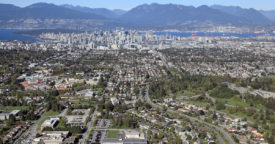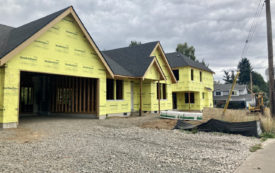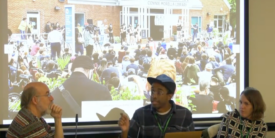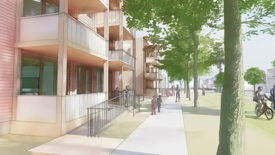Alan:
Guess which mode of transportation flourished after the East Coast earthquake, as it did in Japan? Cycling. Washington, DC’s Capital Bikeshare had record ridership during the two hours after the quake. David Alpert described the bike rush in the Washington Post.
Mark Hinshaw has an insightful piece in Crosscut. (We put it in Sightline Daily, but you might have missed it.) It documents the way sprawl and foreclosures coincide in greater Seattle.
Many of the communities and neighborhoods closest in to the center of the Seattle metropolitan area — areas with significantly higher densities and older housing stock — actually performed reasonably well during the recession. Value was lost certainly, and some loans are under water, but there is virtually none of the wildly over-sold and over-priced housing found in the outer suburbs and exurbs. A similar pattern is found near other urban centers such as Bellevue and Kirkland.
Later, he concludes:
Those counties and cities and towns that most heeded the tenets of growth management have fared the best in this worst of times. They are emerging with the strongest downtowns, the most stable housing, the best values, and the highest “quality of life.”
A month ago, I published an article arguing that localities should have authority to easily lower speed limits. This article in the British Medical Journal underlines that argument. It shows that calming traffic to 20 mph in zones across London over the past two decades has slashed road injuries and deaths there. Inside London’s 20-mph zones, deaths and injuries have diminished by 42 percent—more among children. Not only pedestrians and cyclists but also car drivers and their passengers end up much safer in 20-mph zones.
On a related note, Sightline trustee Matt Lerner of Walk Score notes that New York City, having checked with its citizens and found them surprisingly ignorant of the city’s speed law, is cleverly advertising its speed limits. Meanwhile, the City of Phoenix’s official website actually argues against lowering speed limits.
Anna:
New York Times food columnist Mark Bitman takes President Obama to task on what seems to be his surprising tendency to sacrifice the environment for corporate profits, from rolling out the carpet for genetically modified crops to potentially giving the OK to the Keystone tar sands pipeline. “A truly environmentally friendly president (like the one candidate Obama appeared to be) would be looking for creative ways to leave fossil fuels underground, not extract them. Perhaps he doesn’t ‘believe in’ global warming at this point, like many Republicans?”
On the brighter side, check out this local story of neighbors helping neighbors to live sustainably. Two Transition communities cropped up in Skagit County last year — Chuckanut Transition based in Bow and Transition Fidalgo and Friends from the Anacortes area. A third one is starting in Mount Vernon. Members of these groups practice sustainable lifestyles, with home gardens and energy-efficient appliances, but their goal is to expand their circles and teach others how to depend more on their neighbors. It’s pretty cool that taking steps to curb global-warming pollution means enriching lives and creating strong, resilient communities.
Clark:
A funny (though fictional) conversation with a transportation engineer, from StrongTowns.org.
Peak cars? Peak travel? It seems like something’s in the air: researchers are increasingly finding that industrialized nations’ appetite for travel is becoming sated. But of course, the developing world is another story.







